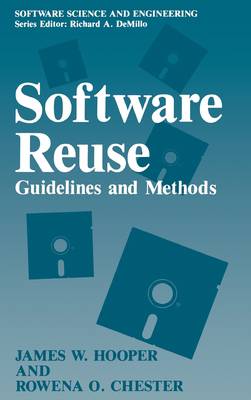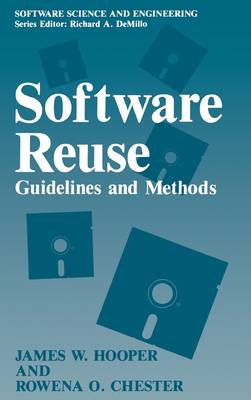
- Afhalen na 1 uur in een winkel met voorraad
- Gratis thuislevering in België vanaf € 30
- Ruim aanbod met 7 miljoen producten
- Afhalen na 1 uur in een winkel met voorraad
- Gratis thuislevering in België vanaf € 30
- Ruim aanbod met 7 miljoen producten
Zoeken
€ 151,45
+ 302 punten
Uitvoering
Omschrijving
1. Background and Introduction.- 1.1 The Problem.- 1.2 Concepts and Definitions.- 1.3 Research Activities.- 1.4 Status of Reuse Practice.- 1.5 Scope and Organization of this Book.- 1.6 References.- 2. Managerial Guidelines.- 2.1 Managerial Issues and Approaches.- 2.1.1 Organizational Management and Structure.- 2.1.2 Organizational Behavior.- 2.1.3 Contractual and Legal Considerations.- 2.1.4 Financial Considerations.- 2.1.5 Case Study: Reuse Program at Hartford Insurance Group.- 2.2 Software Development and Maintenance Incorporating Reuse.- 2.2.1 The Software Process.- 2.2.2 Life-Cycle Models.- 2.2.3 A Generic Reuse/Reusability Model.- 2.2.4 Establishing a Process.- 2.2.5 Case Study: JIAWG Reuse-Based Process Plan.- 2.3 References.- 3. Technical Guidelines.- 3.1 Domain Analysis.- 3.1.1 Overview.- 3.1.2 Case Study: The Domain Analysis Project at Software Engineering Institute (SEI).- 3.2 Creating Reusable Components.- 3.2.1 Spanning the Life Cycle.- 3.2.2 Requirements and Designs.- 3.2.2.1 Overview.- 3.2.2.2 Object-Oriented Approaches.- 3.2.3 Code Components.- 3.2.3.1 Code Component Structures.- 3.2.3.2 Programming Style.- 3.2.4 Component Quality.- 3.2.5 Classifying and Storing Components.- 3.2.6 Case Study: A Design Study of Telephony Software at Ericsson Telecom.- 3.3 Reusing Components.- 3.3.1 Cognitive Aspects.- 3.3.2 Searching and Retrieving.- 3.3.3 Understanding and Assessing Components.- 3.3.4 Adapting Components.- 3.3.5 Composition of Code Components.- 3.3.6 Case Study: A Quantitative Study of Spacecraft Control Software Reuse at GSFC.- 3.3.7 Case Study: The Reusable Software Library (RSL) at Intermetrics, Inc..- 3.4 Tools and Environments.- 3.5 References.- 4. Getting Started.- 4.1 Discussion.- 4.2 A Phased Approach.- 4.3 References.- Appendix A: Collected Guidelines.- Appendix B: Guidelines for Reusable Ada Code.
Specificaties
Betrokkenen
- Auteur(s):
- Uitgeverij:
Inhoud
- Aantal bladzijden:
- 200
- Taal:
- Engels
- Reeks:
Eigenschappen
- Productcode (EAN):
- 9780306439186
- Verschijningsdatum:
- 1/05/1991
- Uitvoering:
- Hardcover
- Formaat:
- Genaaid
- Afmetingen:
- 152 mm x 229 mm
- Gewicht:
- 467 g

Alleen bij Standaard Boekhandel
+ 302 punten op je klantenkaart van Standaard Boekhandel
Beoordelingen
We publiceren alleen reviews die voldoen aan de voorwaarden voor reviews. Bekijk onze voorwaarden voor reviews.







